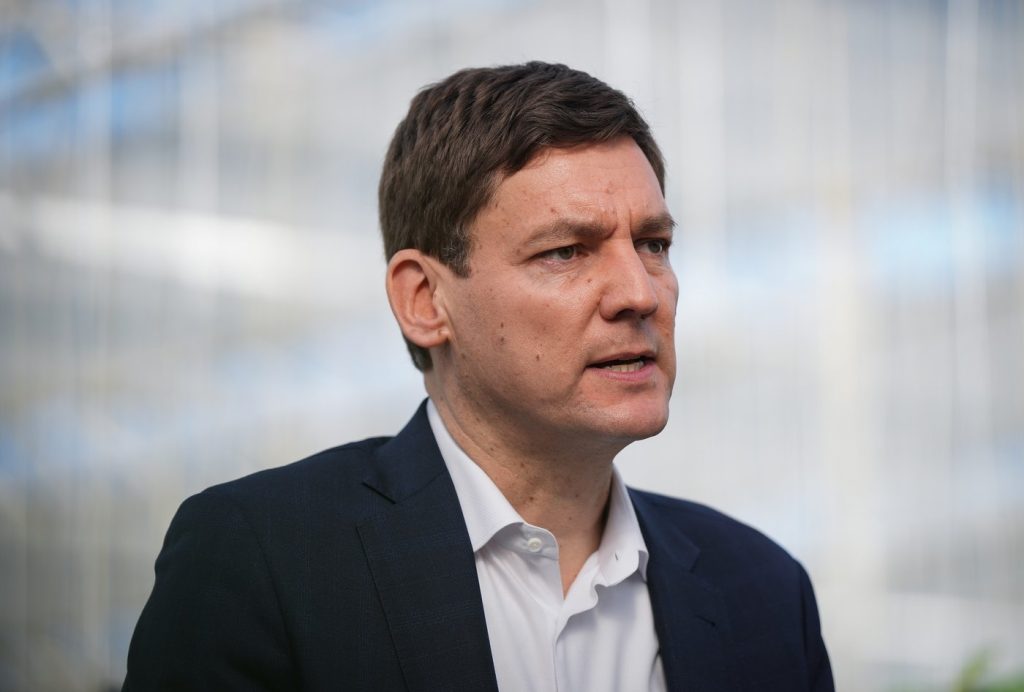$900M B.C.-based hydrogen fuel network will create jobs while cutting emissions: Eby

The Canada Infrastructure Bank is providing a $337 million loan toward a Vancouver company’s plans to create a network of hydrogen factories and fuelling stations that could create nearly 300 jobs while cutting greenhouse gas emissions.
HTEC’s $900-million H2 Gateway project, which is also backed by the B.C. government, includes plans for up to 20 hydrogen refuelling stations, 18 of them in B.C. and the others in Alberta.
Both the bank, which is a Crown corporation, and the B.C. government said the stations would be supplied by three new electrolysis hydrogen production plants in Burnaby, Nanaimo and Prince George, while another facility to liquefy 15 tonnes of byproduct hydrogen would be built in North Vancouver.
Advertisement
B.C. Premier David Eby said Friday that the H2 Gateway differed from past hydrogen projects because it targets specifically the medium- and heavy-duty transport industry with an accessible supply of the clean-burning fuel.
“HTEC has a vision for these fuelling stations that’s targeted at industry, particularly the transportation industry,” Eby said.
“HTEC has identified that gap in the ecosystem and they’re bringing the pieces together in a comprehensive network by targeting a specific sector.”
The B.C. government said the project would create more than 280 jobs and could reduce emissions by about 133,000 tonnes a year.
HTEC president Colin Armstrong said developing an “ecosystem” of supply and fuelling stations was the first step in creating demand for hydrogen adoption in the transport industry.
Advertisement
“We can’t quite drive up to Prince George today, but our goal is to connect up there, particularly on the heavy-duty side of things,” Armstrong said. “But once we do this, we believe we can take (hydrogen) certainly across the country and to the rest of the world.”
The project is designed to support hydrogen fuel-cell vehicles that the government says can travel long distances and have short refuelling times, and 14 of the new stations will be able to refuel up to 300 heavy vehicles per day.
University of Toronto professor of mechanical and industrial engineering Murray Thomson said hydrogen has long been championed as a potential clean-burning fuel for mass adoption because it emits only water when consumed while generating a large amount of energy.
That large quantity of energy generated through hydrogen and its refill speed are two reasons the trucking sector prefers the source to electric trucks weighed down by heavy batteries with low energy density.
“Trucks need a lot of energy,” Thomson said. “So you’d have to have a lot of batteries, and that might not be practical. Hydrogen is a way to (get) a lot of energy-dense fuel on trucks.”
Advertisement
He said while he isn’t familiar with the details of the H2 Gateway, its plan on paper has several factors that could help it realize the decarbonization goal stated in the project’s announcement.
First, the hydrogen production would be through electrolysis, a process that doesn’t emit carbon, unlike the creation of hydrogen through processes such as natural gas reforming.
Second, the electricity needed for the hydrogen production plants in B.C. would be mostly from hydro, further limiting carbon emissions in the process.
Thomson said the key challenge for hydrogen adoption now is cost, and a decision for the federal government to financially support such a project is crucial in determining how a larger scale-up of the technology will look.
“Many times, you really don’t know how it’s all going to turn out,” he said. “You don’t know all the implications until you build it. So to a certain extent, building this first-of-a-kind technology — getting it out there, see how it works — is essential to see the potential of this technology.
Advertisement
“You can only do so much just designing it. You need to deploy it in order to really get the technology going.”
HTEC did not provide a timeline for construction of the H2 Gateway on its fact sheet for the project.
This report by The Canadian Press was first published May 24, 2024.
Darryl Greer and Chuck Chiang, The Canadian Press
Advertisement